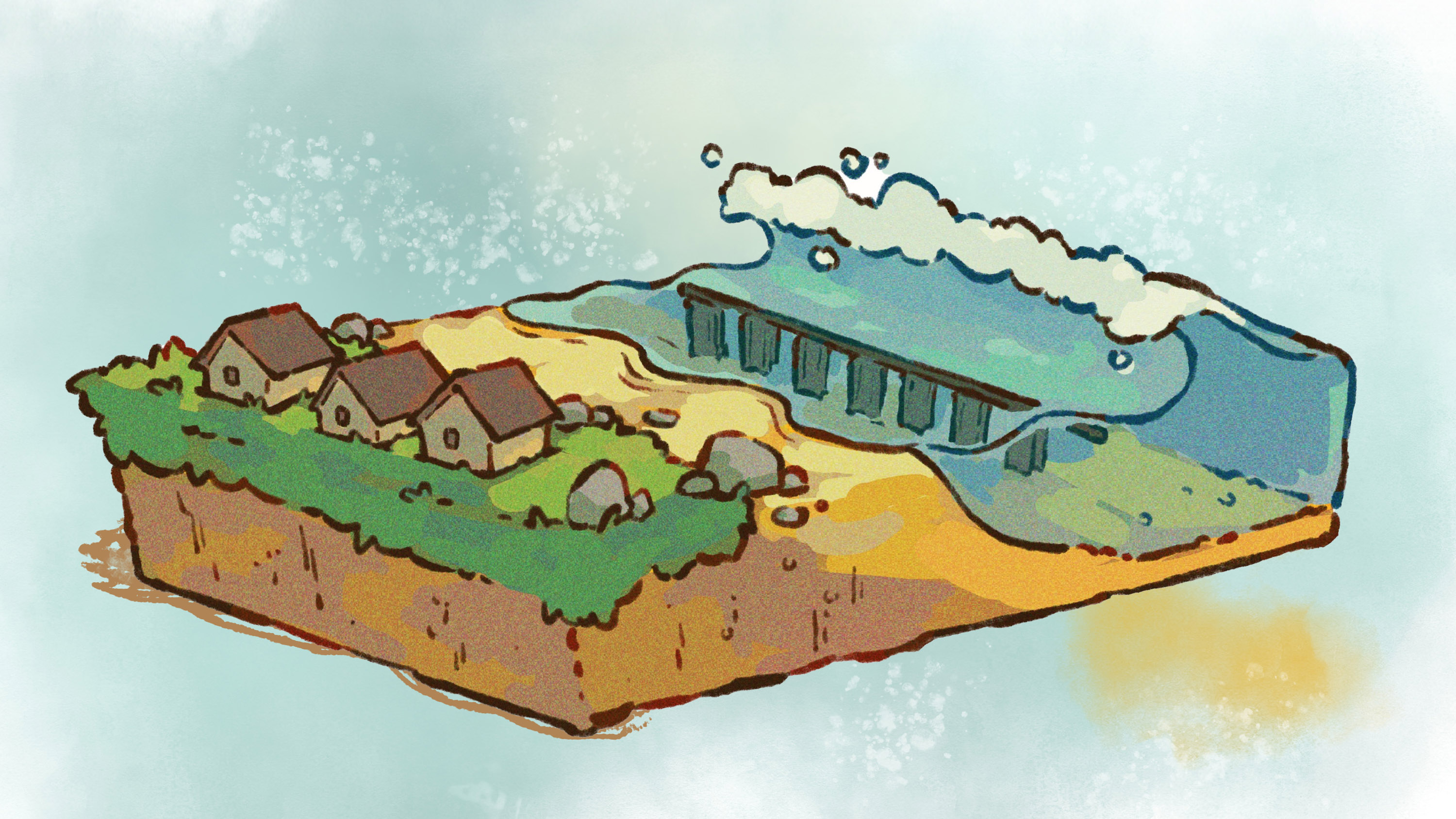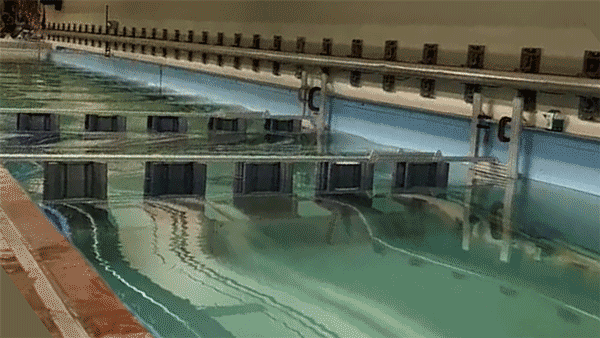MIT engineers have designed a sustainable, modular structure that could dissipate more than 95% of incoming wave energy while providing space for fish to live.

COURTESY OF THE RESEARCHERS, EDITED BY MIT NEWS
In tropical waters, coral reefs shelter marine life and buffer islands from stormy seas—but these natural structures are threatened by the effects of climate change, which is also multiplying the extreme weather events that leave coastal communities vulnerable to flooding and erosion.
An MIT team now hopes to fortify coastlines with “architected” reefs—sustainable offshore structures engineered to mimic the wave-buffering effects of natural reefs while also providing pockets for fish and other organisms to thrive.
What they propose is a series of vertical cylinders, each surrounded by four long, rudder-like slats. The engineers found that this structure efficiently breaks a wave into turbulent jets, ultimately dissipating most of its total energy.
Don’t settle for half the story.
Get paywall-free access to technology news for the here and now.
Subscribe now
Already a subscriber?
Sign in
MIT Technology Review provides an
intelligent and independent filter for the
flood of information about technology.
Subscribe now
Already a subscriber?
Sign in

COURTESY OF THE RESEARCHERS
Researchers at the MIT Sea Grant had noticed that cylindrical blowout-preventing valves in offshore oil and gas wells generated a high amount of drag and wondered if a similar structure could help tame waves. They collaborated on the design with researchers at the Center for Bits and Atoms, who adapted their work on ultralight cellular structures for the aerospace industry.
The researchers 3D-printed a lab-scale version from plastic but determined that using a more porous material would be as effective. They plan to fabricate full-scale structures from sustainable cement, molding it in a pattern of egg-carton-like “voxels” that would be hospitable for fish. The cylinders could be connected to form a long, semipermeable wall, which the engineers could erect about half a mile from shore. Initial experiments with the prototypes suggest that the architected reef could reduce the energy of incoming waves by more than 95%.
“This would be like a long wave-breaker,” says Michael Triantafyllou, ’77, ScD ’79, a professor of mechanical engineering and director of the MIT Sea Grant, who is the senior author of a paper on the work. “If waves are six meters high coming toward this reef structure, they would be ultimately less than a meter high on the other side. So this kills the impact of the waves, which could prevent erosion and flooding.”
The team is currently fabricating cement voxel structures and assembling them into a lab-scale architected reef, which they will test under various wave conditions. They envision that the design could be modular, scalable to any desired size, and easy to construct on site or to transport and install in various offshore locations. “Now we’re simulating actual sea patterns and testing how these models will perform when we eventually have to deploy them,” says Anjali Sinha ’23, a graduate student at MIT who recently joined the group.
Next, the team hopes to work with beach towns in Massachusetts, where the water is too cold for coral, to test the structures on a pilot scale.
“These test structures would not be small,” Triantafyllou emphasizes. “They would be about a mile long, and about five meters tall, and would cost something like $6 million per mile. So it’s not cheap. But it could prevent billions of dollars in storm damage. And with climate change, protecting the coasts will become a big issue.”




